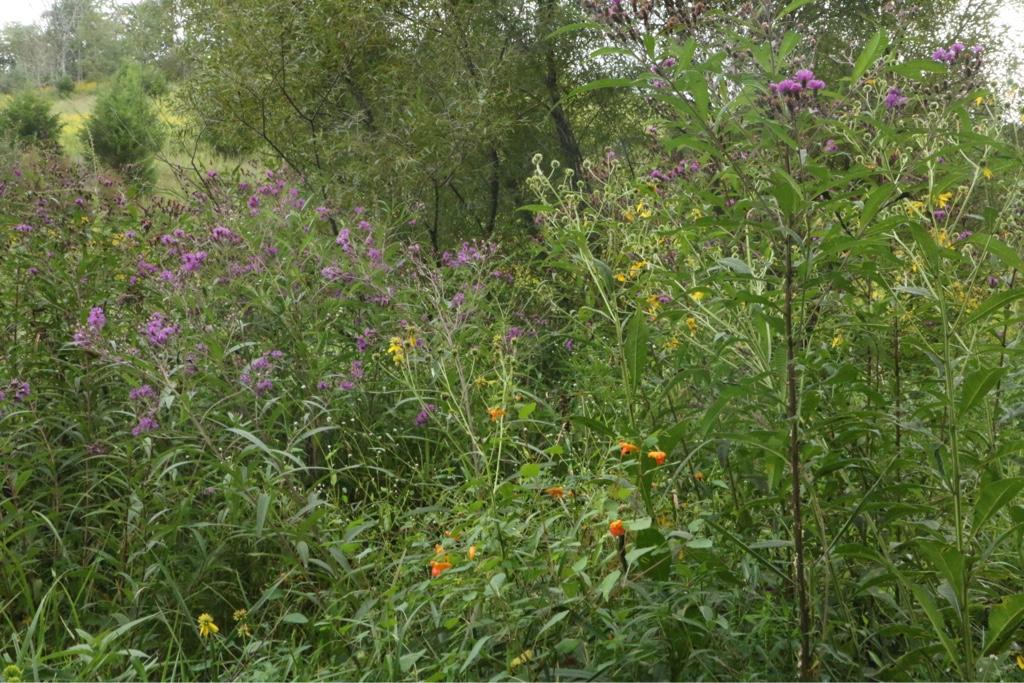BenAllgood
Well-Known Member
From the Abstract: "Revegetation following Seedbank produced a plant community that provided habitat for many wildlife species equal to or better than Planted and was 3.7 times less expensive than Planted. © 2021 The Wildlife Society."
https://wildlife.onlinelibrary.wiley.com/doi/10.1002/wsb.1232

WILDLIFE.ONLINELIBRARY.WILEY.COM
TWS Journals
ABSTRACT
Restoration of early successional plant communities dominated by nonnative plant species is a central focus of many state and federal agencies to improve habitat for wildlife associated with these communities. Restoration efforts largely have concentrated on controlling nonnative species followed by planting native grasses and forbs. However, there are numerous establishment problems associated with planting that warrant evaluation of alternative approaches for restoration. We conducted a field experiment to compare vegetation composition and structure as related to habitat for focal wildlife among plant communities established by planting (Planted) native grasses and forbs and revegetation from the seedbank (Seedbank) without planting following control of tall fescue (Schedonorus arundinaceus) at 15 replicated sites in Tennessee and Alabama, USA. Planted and Seedbank treatments produced similar plant communities. Vegetation structure providing cover for nesting and brooding northern bobwhite (Colinus virginianus) and wild turkey (Meleagris gallopavo) was similar between Seedbank and Planted treatments except native grass cover was greatest in Planted, and we recorded greater openness at ground level in Seedbank than Planted or tall fescue control (Control). Abundance of northern bobwhite food plants and selected white-tailed deer (Odocoileus virginianus) forage were similar between Planted and Seedbank treatments, but nutritional carrying capacity for deer was greatest in Seedbank. Despite similarities in food abundance, and even though all forbs included in the planting mixtures were food plants, the majority of food plants in Planted were from the seedbank. The compositional and structural characteristics deemed most influential in previous studies to selection of breeding sites by dickcissel (Spiza americana), field sparrow (Spizella pusilla), grasshopper sparrow (Ammodramus savannarum), Henslow's sparrow (Ammodramus henslowii), and northern bobwhite were similar in Planted and Seedbank. Tall fescue Control was most similar to characteristics of eastern meadowlark (Sturnella magna) breeding sites. Revegetation following Seedbank produced a plant community that provided habitat for many wildlife species equal to or better than Planted and was 3.7 times less expensive than Planted. © 2021 The Wildlife Society.
https://wildlife.onlinelibrary.wiley.com/doi/10.1002/wsb.1232

WILDLIFE.ONLINELIBRARY.WILEY.COM
TWS Journals
ABSTRACT
Restoration of early successional plant communities dominated by nonnative plant species is a central focus of many state and federal agencies to improve habitat for wildlife associated with these communities. Restoration efforts largely have concentrated on controlling nonnative species followed by planting native grasses and forbs. However, there are numerous establishment problems associated with planting that warrant evaluation of alternative approaches for restoration. We conducted a field experiment to compare vegetation composition and structure as related to habitat for focal wildlife among plant communities established by planting (Planted) native grasses and forbs and revegetation from the seedbank (Seedbank) without planting following control of tall fescue (Schedonorus arundinaceus) at 15 replicated sites in Tennessee and Alabama, USA. Planted and Seedbank treatments produced similar plant communities. Vegetation structure providing cover for nesting and brooding northern bobwhite (Colinus virginianus) and wild turkey (Meleagris gallopavo) was similar between Seedbank and Planted treatments except native grass cover was greatest in Planted, and we recorded greater openness at ground level in Seedbank than Planted or tall fescue control (Control). Abundance of northern bobwhite food plants and selected white-tailed deer (Odocoileus virginianus) forage were similar between Planted and Seedbank treatments, but nutritional carrying capacity for deer was greatest in Seedbank. Despite similarities in food abundance, and even though all forbs included in the planting mixtures were food plants, the majority of food plants in Planted were from the seedbank. The compositional and structural characteristics deemed most influential in previous studies to selection of breeding sites by dickcissel (Spiza americana), field sparrow (Spizella pusilla), grasshopper sparrow (Ammodramus savannarum), Henslow's sparrow (Ammodramus henslowii), and northern bobwhite were similar in Planted and Seedbank. Tall fescue Control was most similar to characteristics of eastern meadowlark (Sturnella magna) breeding sites. Revegetation following Seedbank produced a plant community that provided habitat for many wildlife species equal to or better than Planted and was 3.7 times less expensive than Planted. © 2021 The Wildlife Society.



